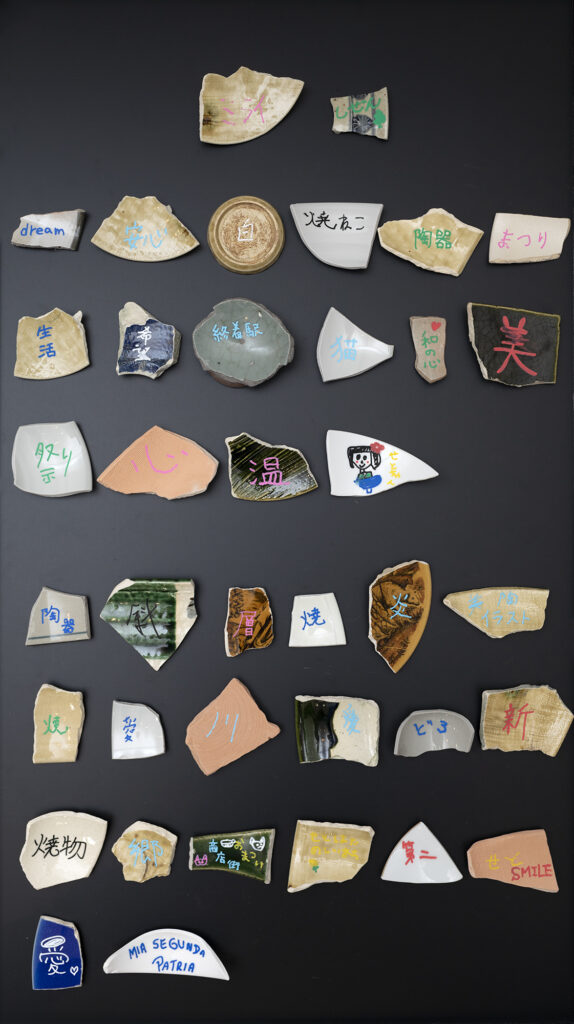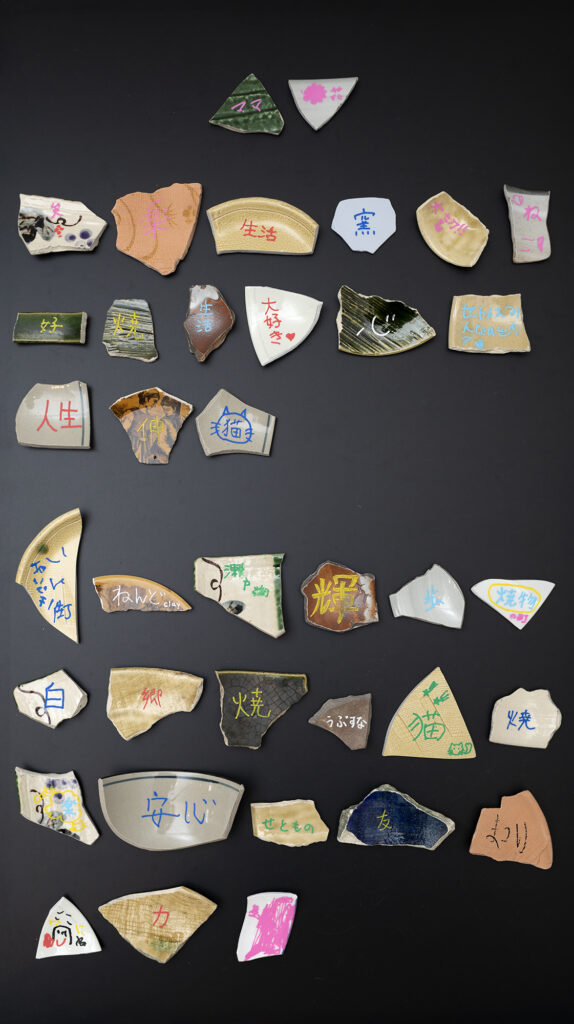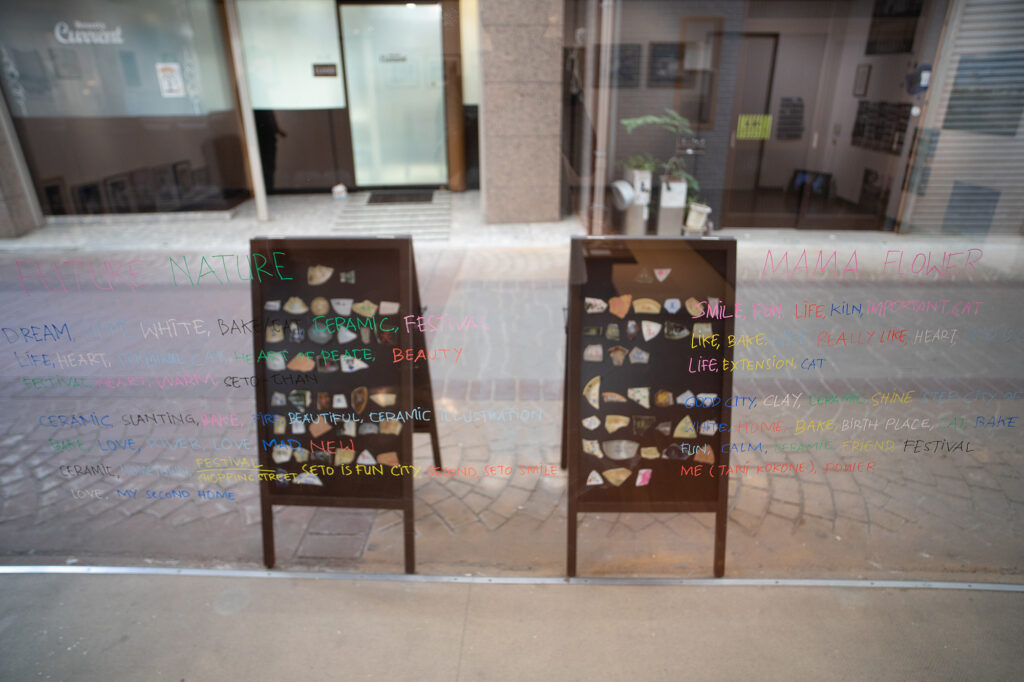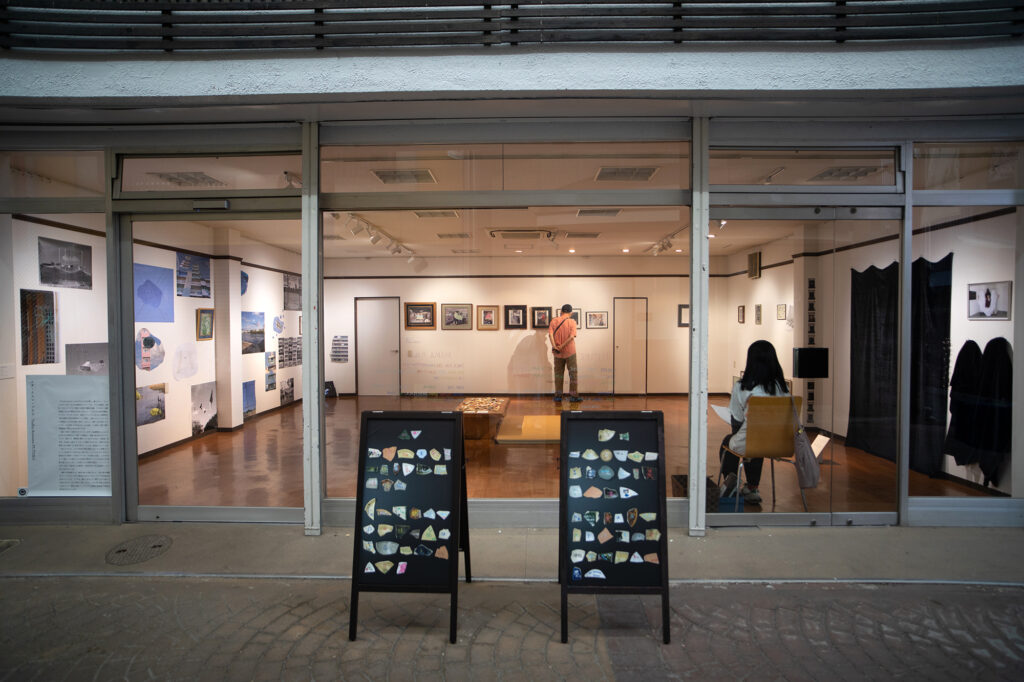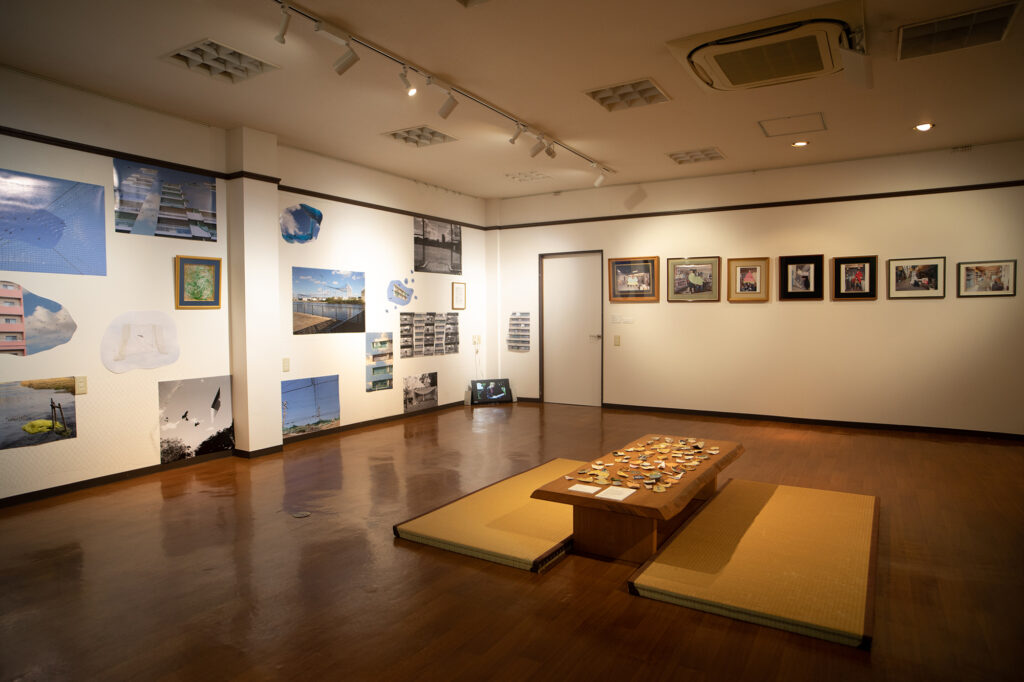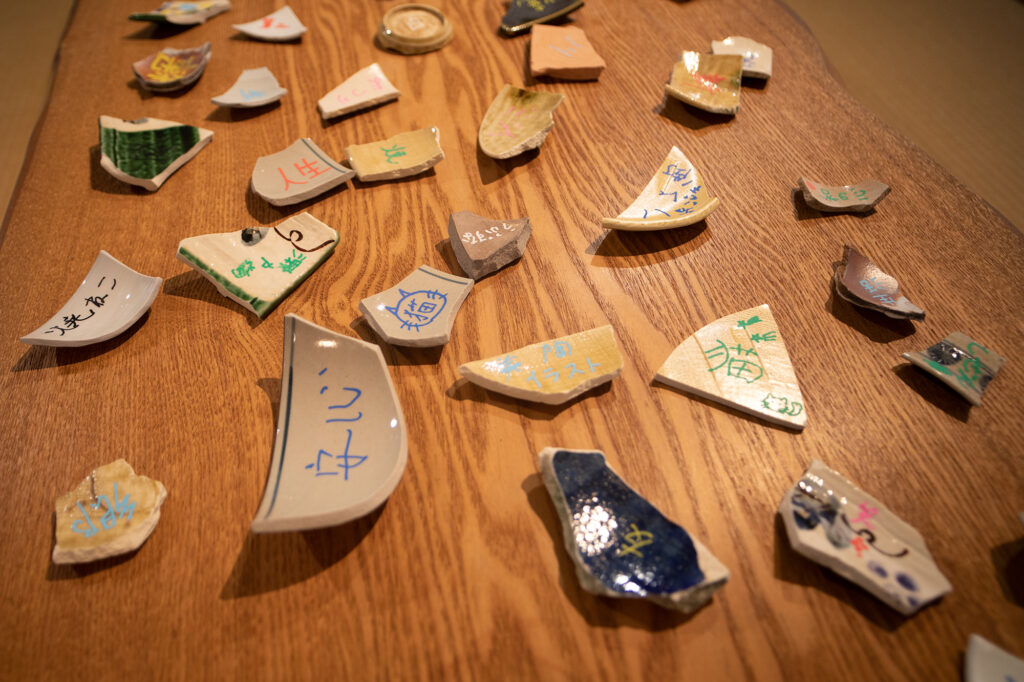The scenery of big cities that I have visited outside Japan is dominated by photos or graphics as markers and advertisements for a place or product. In contrast to my experience living in Japan, I got the impression that the cityscape is dominated by text. I suspect that Japanese people prefer to use text in their daily lives. During a month of living and working in Seto City, I was assisted by a team from the Aichi Triennale to find participants for my work. We asked Seto residents for their opinions about their homes, by describing them in one word. The words were then written on ceramic shards that we had prepared beforehand, which were expected to reflect Seto as a city with a long history of ceramic making.
The ceramic shards and words were then arranged into a poem, in an unconventional way. Usually to create a poem, an author creates and combines words based on the meaning of words and sentences. For this work I tried a different approach, inspired by the Dadaism movement. So the words were arranged based on the visual form and color of the ceramics, the words chosen based on meaning were limited to choosing the title of the poem. The ceramics and text were arranged without knowing the meaning of the text and arranged as if they resembled sentences and paragraphs. Usually the narrative of a place is always obtained from an expert or someone in power, this work is expected to represent the feelings and experiences of ordinary people living in Seto Aichi city.
I remember there was a poet from Indonesia named Sapardi Djoko Darmono who once said ‘Poetry if it has not been sounded is not poetry’. I was interested in the statement, then invited a Japanese artist named Yurika Eematsu to read it, which I then recorded using video. The video work was edited and compiled by my partner Putri Siswanto.
The collected ceramic materials were then displayed on tables and tatami, so that visitors to the exhibition could create their own poetry freely.
Single channel video, Photography, Ceramic, color pen, 2024
